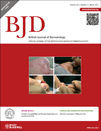Translating clinical activity and gene expression signatures of etanercept and ciclosporin to the psoriasis xenograft SCID mouse model
Funding sources All experimental work was funded by LEO Pharma.
Conflicts of interest The authors are employees of the company funding the research.
Summary
Background The psoriasis xenograft severe combined immunodeficiency (SCID) mouse model is used in drug discovery to obtain preclinical proof-of-principle of new antipsoriatic drug candidates. Validation of this model by antipsoriatic therapeutic agents in clinical use is important to understand its utility as well as its limitations. The effects of the clinically efficacious antitumour necrosis factor-α biologics have not yet been demonstrated in the psoriasis xenograft SCID mouse model.
Objectives To investigate the effect of etanercept and to explore the time-dependent changes induced by ciclosporin on psoriatic biomarkers at the gene expression level in the psoriasis xenograft SCID mouse model.
Methods Xenografted SCID mice were treated either with etanercept and vehicle for 2 weeks or with ciclosporin and vehicle for 2 and 4 weeks, respectively. Treatment-induced changes in the psoriatic grafts were assessed by gene expression analysis and compared with published clinical microarray data. The grafts were further evaluated by histology and immunohistochemistry.
Results Etanercept induced normalization of gene expression, which correlated with a significant reduction in epidermal thickness as well as a decrease in the number of proliferative cells. Anti-inflammatory activity induced by ciclosporin preceded the reduction in epidermal hyperplasia. Comparison of the etanercept- and ciclosporin-induced gene expression signatures with clinical microarray data showed significant correlations.
Conclusions Efficacy of etanercept and ciclosporin could be translated to the psoriasis xenograft SCID mouse model.




